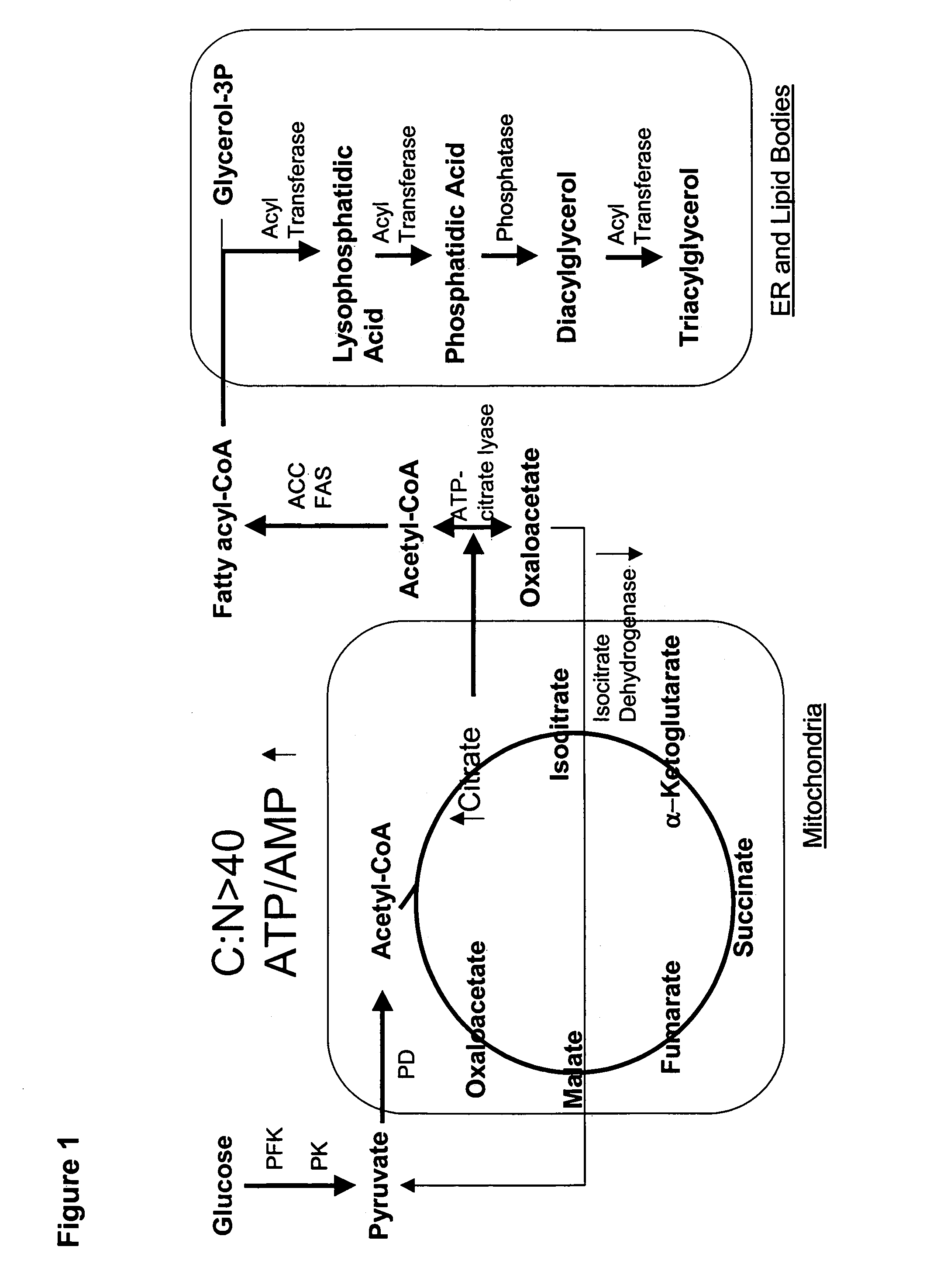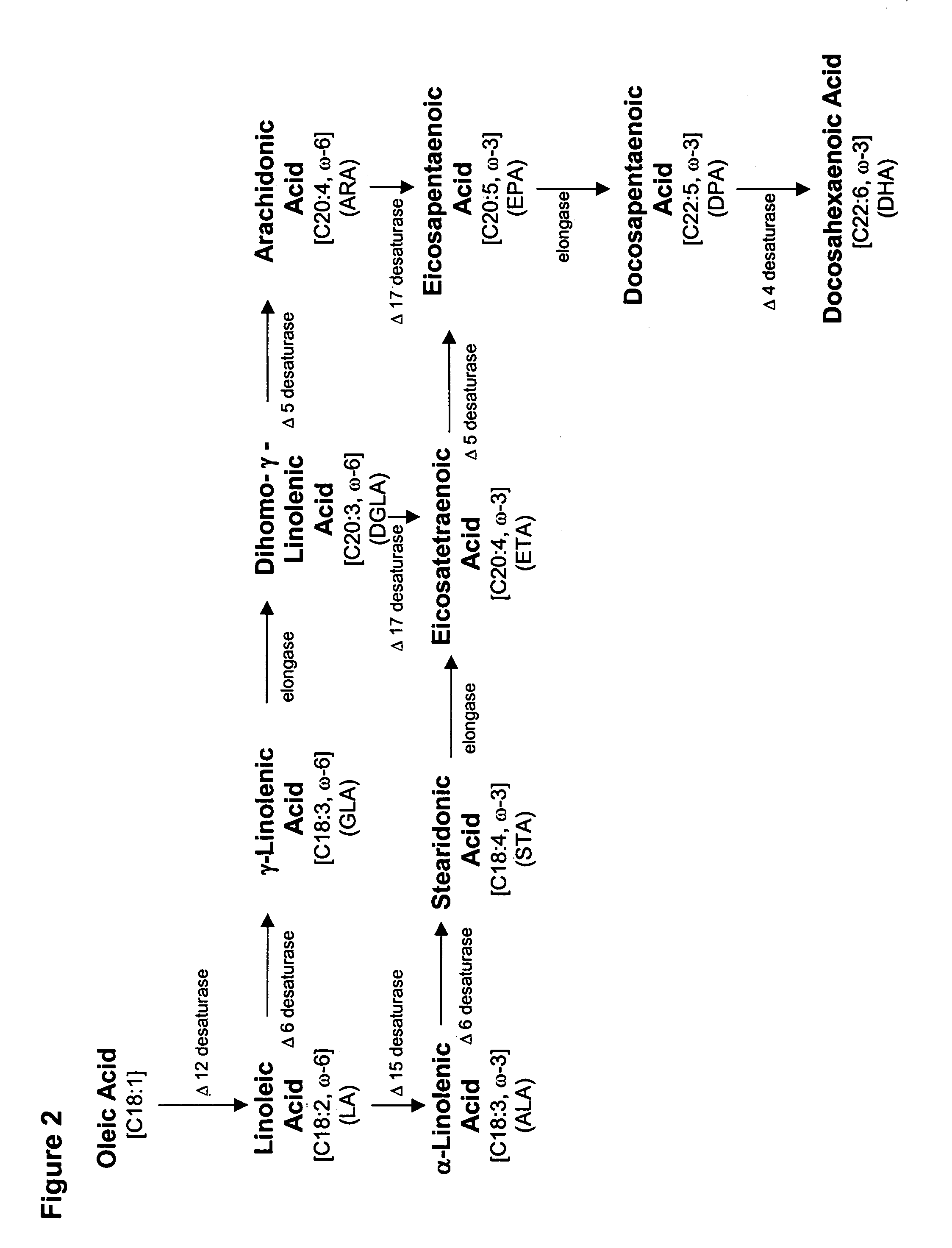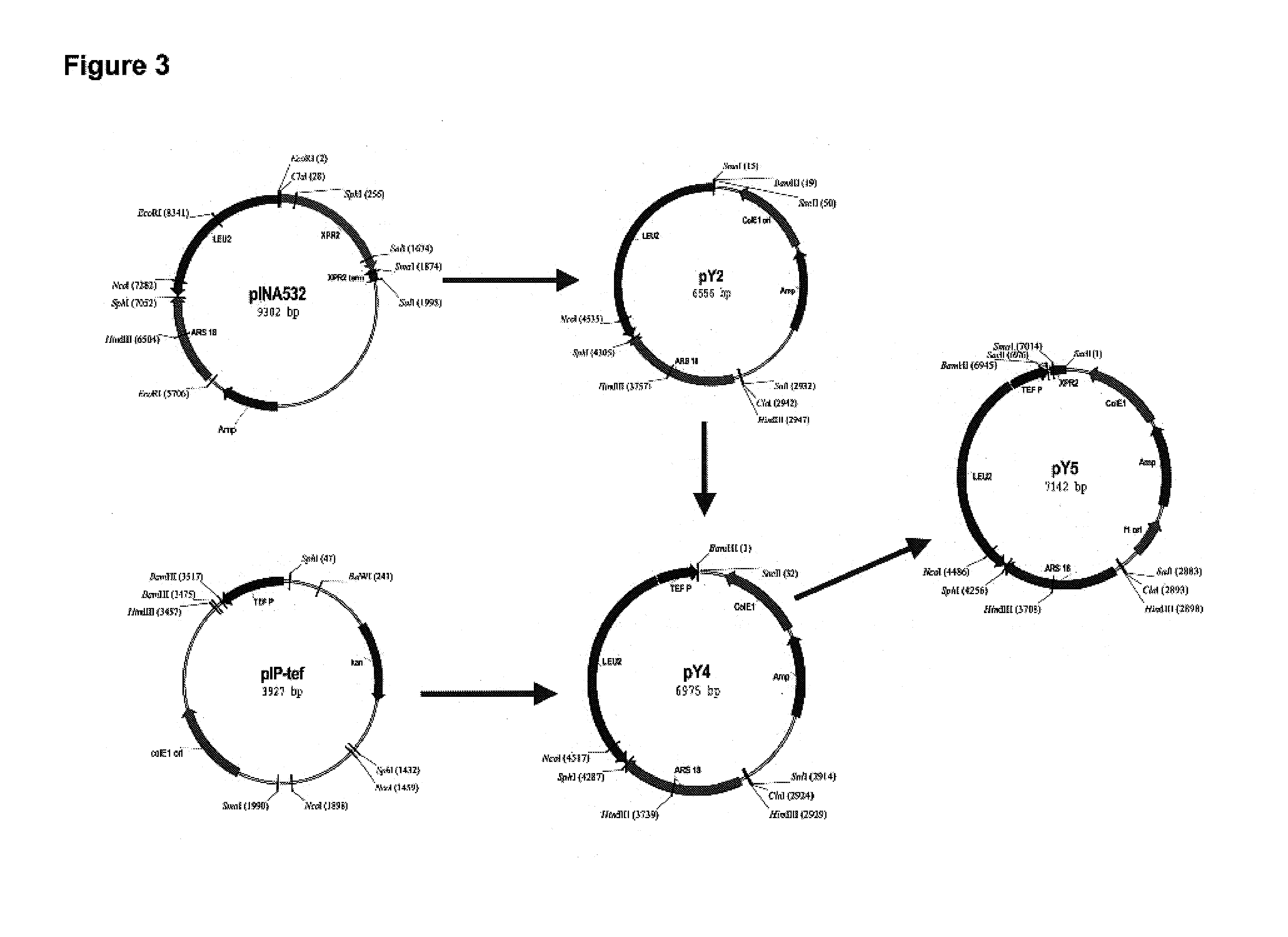Delta-12 desaturase gene suitable for altering levels of polyunsaturated fatty acids in oleaginous yeasts
- Summary
- Abstract
- Description
- Claims
- Application Information
AI Technical Summary
Problems solved by technology
Method used
Image
Examples
example 1
Construction of Plasmids Suitable for Gene Expression in Yarrowia lipolytica
[0252]The present Example describes the construction of plasmids pY5, pY5-4, pY5-13 and pY5-20.
Construction of Plasmid pY5
[0253]The plasmid pY5, a derivative of pINA532 (a gift from Dr. Claude Gaillardin, Insitut National Agronomics, Centre de biotechnologie Agro-Industrielle, laboratoire de Genetique Moleculaire et Cellularie INRA-CNRS, F-78850 Thiverval-Grignon, France), was constructed for expression of heterologous genes in Yarrowia lipolytica, as diagrammed in FIG. 3.
[0254]First, the partially-digested 3598 bp EcoRI fragment containing the ARS18 sequence and LEU2 gene of pINA532 was subcloned into the EcoRI site of pBluescript (Strategene, San Diego, Calif.) to generate pY2. The TEF promoter (Muller S., et al. Yeast, 14: 1267–1283 (1998)) was amplified from Yarrowia lipolytica genomic DNA by PCR using TEF5′ (SEQ ID NO:1) and TEF3′ (SEQ ID NO:2) as primers. PCR amplification was carried out in a 50 μl t...
example 2
Cloning of the Partial Yarrowia lipolytica Δ12 Desaturase and Disruption of the Endogenous Δ12 Desaturase Gene
[0266]Based on the fatty acid composition of wildtype Yarrowia lipolytica (ATCC #76982) which demonstrated that the organism could make LA (18:2) but not ALA (18:3), it was assumed that Y. lipolytica would likely contain gene(s) having Δ12 desaturase activity but not Δ15 desaturase activity. Thus, the present Example describes the use of degenerate PCR primers to isolate a partial coding sequence of the Y. lipolytica Δ12 desaturase and the use of the partial sequence to disrupt the native gene.
Cloning of the Partial Putative Δ12 Desaturase Sequence From Y. lipolytica by PCR Using Degenerate PCR Primers
[0267]Genomic DNA was isolated from Y. lipolytica (ATCC #76982) using DNeasy Tissue Kit (Qiagen, Catalog #69504) and resuspended in kit buffer AE at a DNA concentration of 0.5 μg / μl. PCR amplifications were performed using the genomic DNA as template and several sets of degener...
example 3
Cloning of the Full-Length Yarrowia lipolytica Δ12 Desaturase Gene
[0283]The present Example describes the recovery of the genomic sequences flanking the disrupted gene by plasmid rescue, using the sequence in the rescued plasmid to PCR the intact open reading frame of the native gene. The full-length gene and its deduced amino acid sequence is compared to other fungal desaturases.
Plasmid Rescue of the Yarrowia lipolytica Δ12 Desaturase Gene
[0284]Since the Δ12 desaturase gene was disrupted by the insertion of the entire pY23D12 vector that also contained an E. coli ampicillin-resistant gene and E. coli ori, it was possible to rescue the flanking sequences in E. coli. For this, genomic DNA of Y. lipolytica strain Q-d12D (carrying the disrupted Δ12 desaturase gene; Example 2) was isolated using the DNeasy Tissue Kit. Then, 10 μg of the genomic DNA was digested with 50 μl of restriction enzymes Age I, Avr II, Nhe I and Sph I in a reaction volume of 200 μl. Digested DNA was extracted wit...
PUM
| Property | Measurement | Unit |
|---|---|---|
| Temperature | aaaaa | aaaaa |
| Fraction | aaaaa | aaaaa |
Abstract
Description
Claims
Application Information
 Login to View More
Login to View More - R&D
- Intellectual Property
- Life Sciences
- Materials
- Tech Scout
- Unparalleled Data Quality
- Higher Quality Content
- 60% Fewer Hallucinations
Browse by: Latest US Patents, China's latest patents, Technical Efficacy Thesaurus, Application Domain, Technology Topic, Popular Technical Reports.
© 2025 PatSnap. All rights reserved.Legal|Privacy policy|Modern Slavery Act Transparency Statement|Sitemap|About US| Contact US: help@patsnap.com



